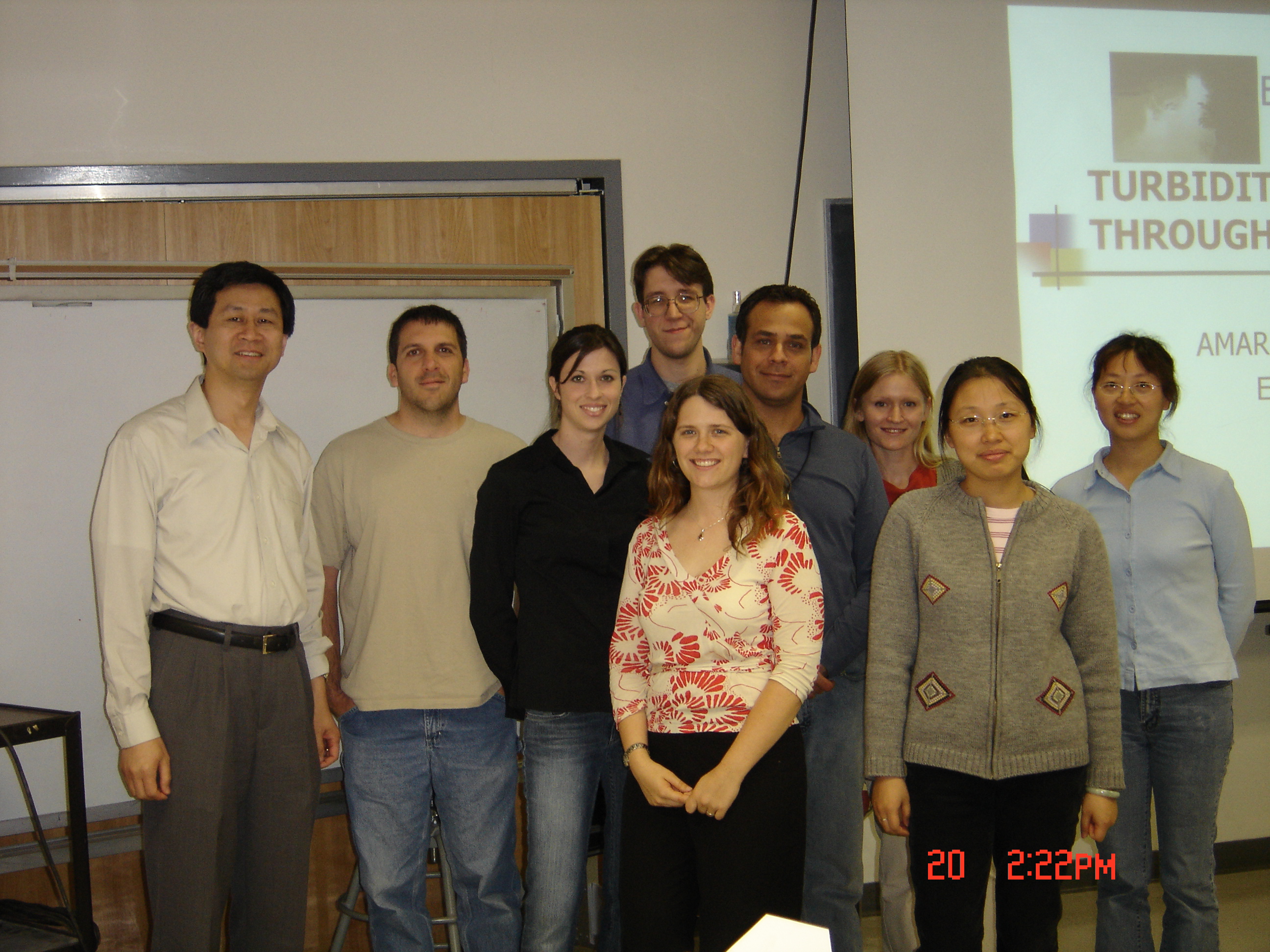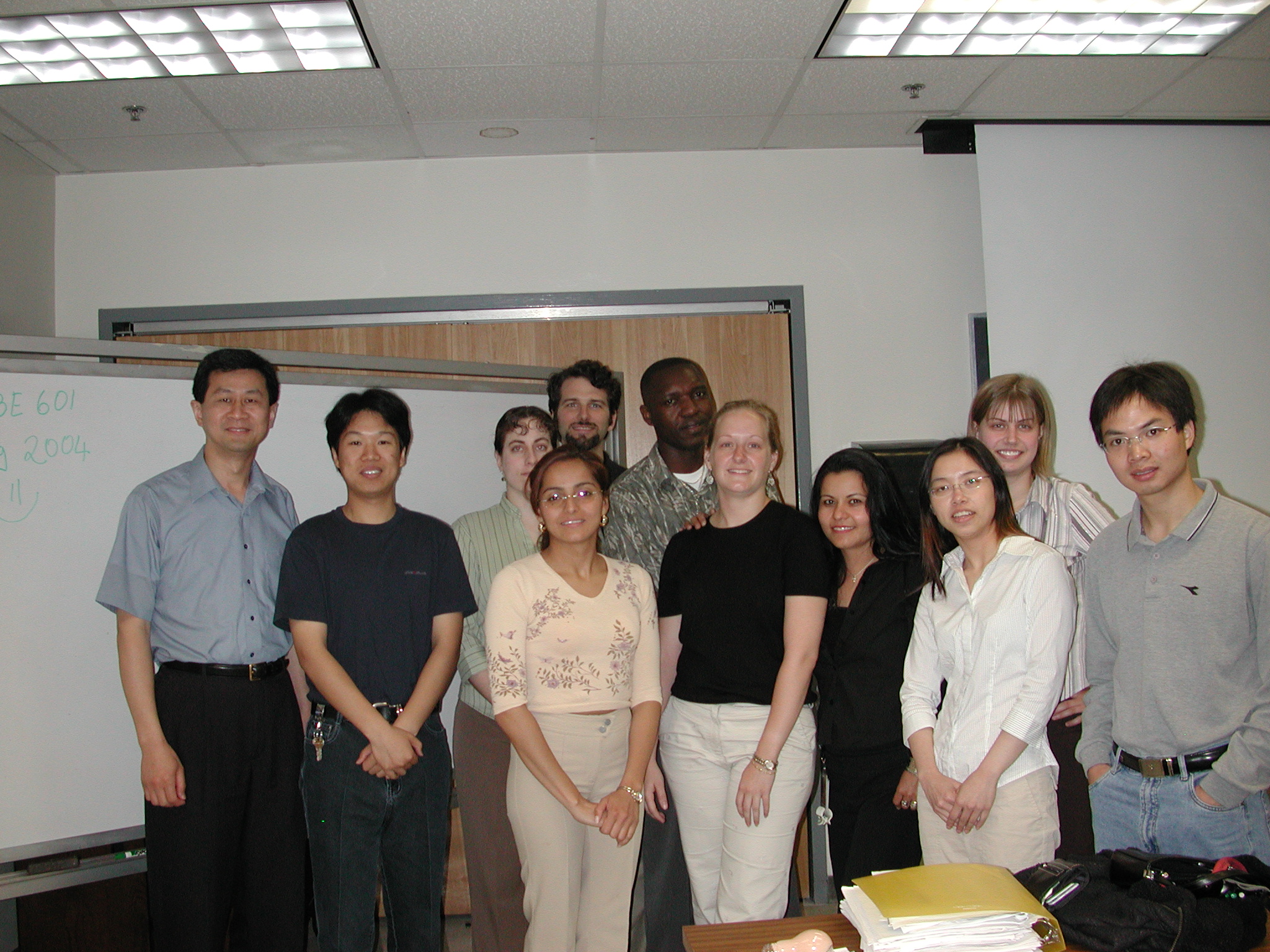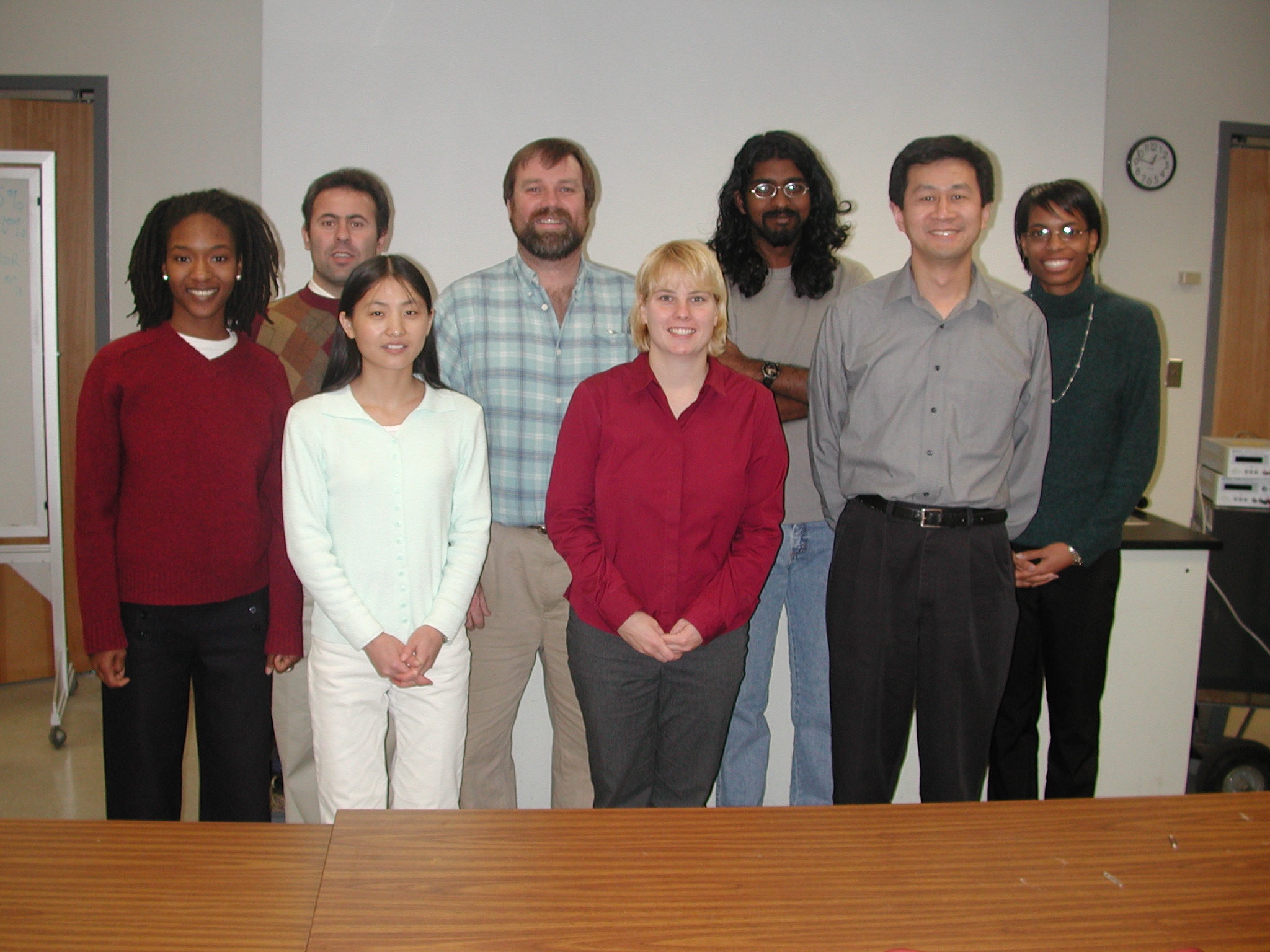|
Syllabus for ENBE 601
Instrumentation in Biological Systems
Spring, 2005
Lectures (Tue & Thu 11:00-11:50am, TBA), Lab 2 hours (Th 9-11am -- TBA)
Objective: To provide students with knowledge and skills for analysis and design of electronic and computer-based instrumentation for sensing, measurements, and controls as applied to biological systems. To be able to use, specify, and develop problem-specific instrumentation systems.
Course Outline:
|
1.0 Introduction
|
1 hr
|
|
2.0 Reviews of Bases
|
|
|
2.1 Analog Electronics – OpAms, Signal Conditioning, Noises and Filters
|
2-6
|
|
2.2 Digital Electronics – Discrete IC Circuits
|
2-6
|
|
3.0 Sensors and Measurements for Biosystems
|
4-6
|
|
4.0 Digital and Analog I/Os and Device Drivers
|
2
|
|
5.0 Computer Interfaces and Buses
|
2-6
|
|
6.0 Computer-Based Data Acquisitions & Controls; C++ / VB
|
4-6
|
|
7.0 Bioimaging and Machine Vision for Biosystem Measurements
|
4-6
|
|
8.0 Errors in Instrumentation and Measurement Systems
|
2-4
|
|
9.0 Project Designs
|
8-10
|
|
|
|
|
Team Design Project Presentations and Demonstrations
|
2
|
Grading: Labs & Assignments: 25% Design Project: 25%
Mid-term Exam and Quizzes: 25% Final exam: 25%
(A=90-100%, B=80-89%, C=70-79%, D=60-69%, F=59 or below)
Remarks: Lab reports and assignments are due in the next lab session after they are assigned.
Reference Materials:
- Diefenderfer and Holton.1994. Principles of Electronic Instrumentation.3rd ed. Saunders College Publishing.
- Faraser.C and J. Milne. 1994. Electromechanical Engineering An Integrated Approach. McGraw-Hill.
- John Webster, 1998. Medical Instrumentation. 3rd Ed. Jophn Wiley & Sons, Inc. ISBN0-471-15368-0
- Doebelin.1990. Measurement Systems – Application and Design. 4thed. McGraw Hill.
- Ramon Pallas-Areny/John Webster, 2001 Sensors and Signal Conditioning. 2nd Ed. Wiley & Sons Inc.
Previous final projects have included:
- “Smart irrigation” Multi-Field Site-Specific Irrigation Control System. Design of a sensing instrument able to sense rainfall and schedule different irrigations to different fields (corn, tomato, etc.), which require different amount of soil moistures.
- “Algae Killer” Automatic Tool to Control Algae Concentration in Aquarium Water. The device can sense the amount of algae in the water, and then automatically turn on algae killer (drug) if the algae concentration reaches certain level.
- “How hard your fingers can grip.” measures grip strength that can be used in medical applications. A “stress ball” type of gripper was mounted with sensor(s) and the strength of the grip was displayed as some kind of curves or numbers on the computer screen.
- “How fast a person can react to light and sound beams” system. A matrix of sound sources surrounded by LED lights were mounted on a board and an X-Y plate with COM serial port was used as the input device to pick the response from the person.
- “Foreign materials tracking subsystem for food safety” used a projector to track the movement of the chicken breasts with bone fragments on conveyor belt.
- Created a turbimeter or turbidimeter whose readings were displayed on a computer through a USB Port.
- Designed and produced a working water level sensor that transfers data to a computer through the USB port. The pressure sensor provided a smooth, linear voltage to water height relationship that converted well through the ADC into the computer. Also, the pressure sensor is sensitive enough to read down to a tenth of an inch of water and fast enough to prove real-time feedback on the height of the water.
- Development of an Electrocardiograph with USB Interface
- Development of a PCI interface PCB board for vision system control
Previous Classes:

2005 graduate students in ENBE601

2004 graduate students in ENBE601

2003 graduate students in ENBE601
|



